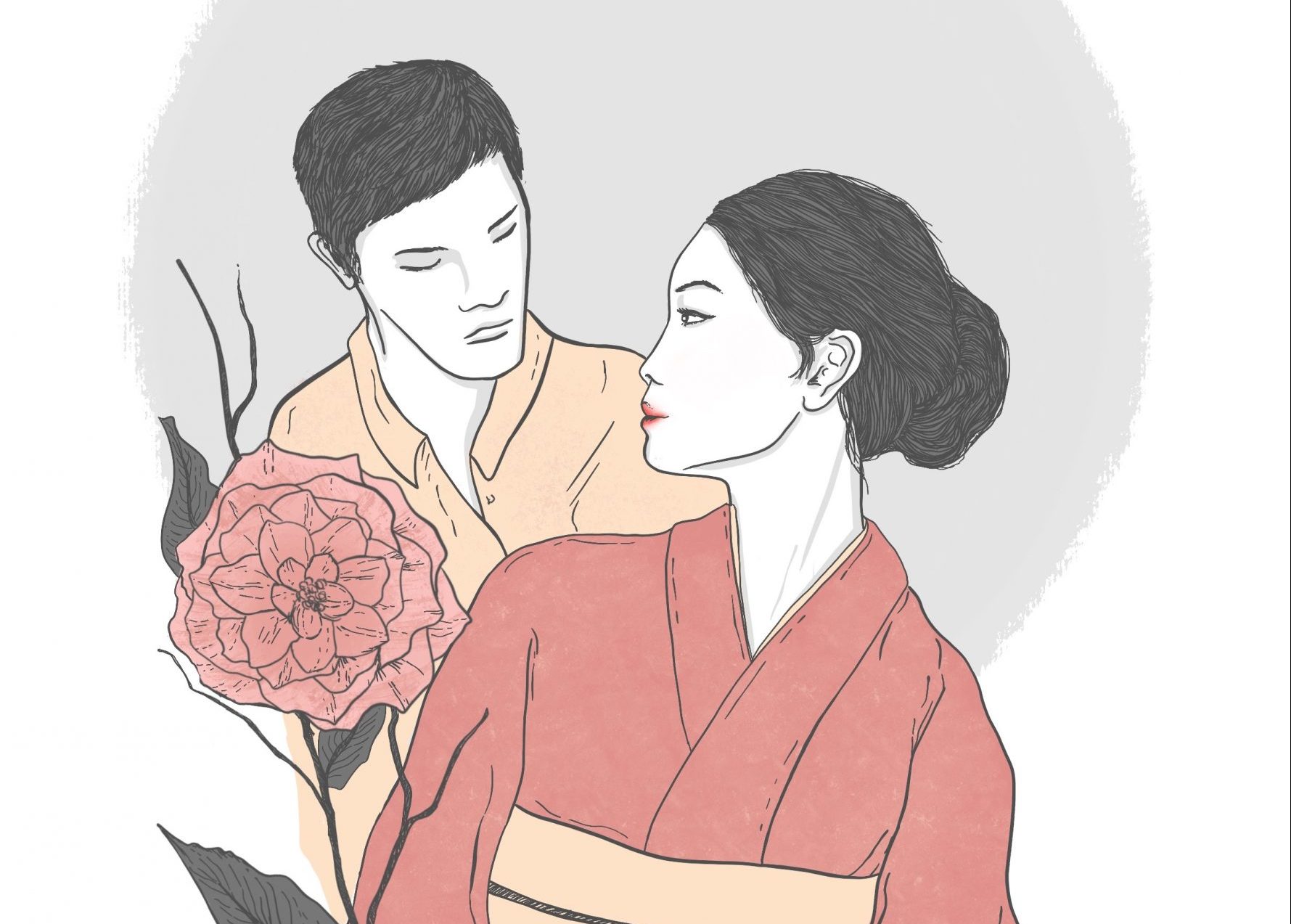‘Nobody has the right to cause me pain. Nobody can get away with that.’
‘Kawaki’ literally translates as thirst; the word evokes a parched, almost drought-like, state of being. In Yukio Mishima’s Thirst for Love (Ai no Kawaki) (1950), the term refers to protagonist Etsuko’s complex relationship with love and pain, underscoring her obsession with being loved. Following the death of her husband Ryosuke, the young widow falls into the household (and mistresshood) of her father-in-law Yakichi. She develops feelings for the lowly gardener Saburo who, oblivious of her interest, is having an affair with the maid Miyo. His apathy exposes and escalates Etsuko’s obsession. It is only in the novel’s climax that she overcomes her hysteria.
Narratives about obsessive love and narcissism scarcely feature – let alone give voice and agency to – a female protagonist. Mishima’s Etsuko is self-conscious and multi-dimensional. Her transformation from conventional introvert to assertive obsessive draws heavily from the works of François Mauriac, and particularly, Sigmund Freud’s Studies on Hysteria (1895). Plagued by ‘inexplicable’ feelings and hysteric attacks, Etsuko represses traumatic experiences. She is both numb to, and repulsed by, her lecherous father-in-law’s advances. These experiences fester in her subconscious, revealed to readers through dark, evocative episodes.
In life, her husband’s proud infidelity drives her to suicidal thoughts. He rejects Etsuko’s sexual advances, and knowingly leaves traces of his affairs simply to inflict emotional turmoil. Ultimately, Etsuko is deprived of the opportunity to inflict her revenge by suicide; when Ryosuke falls ill with typhoid, she’s forced to nurse him in hospital, enduring the humiliating visits of his girlfriends.
Yet, Etsuko does not passively crave her husband’s emotional manipulation. Against gendered social subjugation to emotional subjectivity, she mourns his death as the loss of her own heightened state of experience: ‘Who would know that the tears I shed at my husband’s bedside were tears of farewell to this passion that consumed me every day?’
Nonetheless, Mishima often relies upon simplistic tropes: instead of empowering the female characters themselves, he reverses traditional gender hierarchies. Saburo is reduced to an erotic object of the female gaze; it is his dull character and lower class, rather than his gender, that enable his subjugation.
Etsuko desires him precisely because she perceives him – and others – too dull-witted to understand her complex being and determination. His disinterest is the damning challenge to her own narcissism, because it is assumed that there is no ‘greater success for a female’ than to dominate a man’s life.
In the novel’s climax, Etsuko’s emotional trauma and narcissistic addiction manifests as a petulant attempt at self-preservation: ‘…rejected women feel the same rejection that children do. They occupy the same rejected world, in which they grow cruel, despite themselves.’ Revenge and traumatic absolution is exacted only through simple violence, whether suicidal or homicidal.
As a male perspective on the complex female psyche, perhaps these contradictions are what make Mishima’s observations so intriguing. Indulging in this dark novel – and challenging its representations of gender – has left me gasping for more.
Illustration: Holly Joiner

